
Round Houses Continue to Captivate
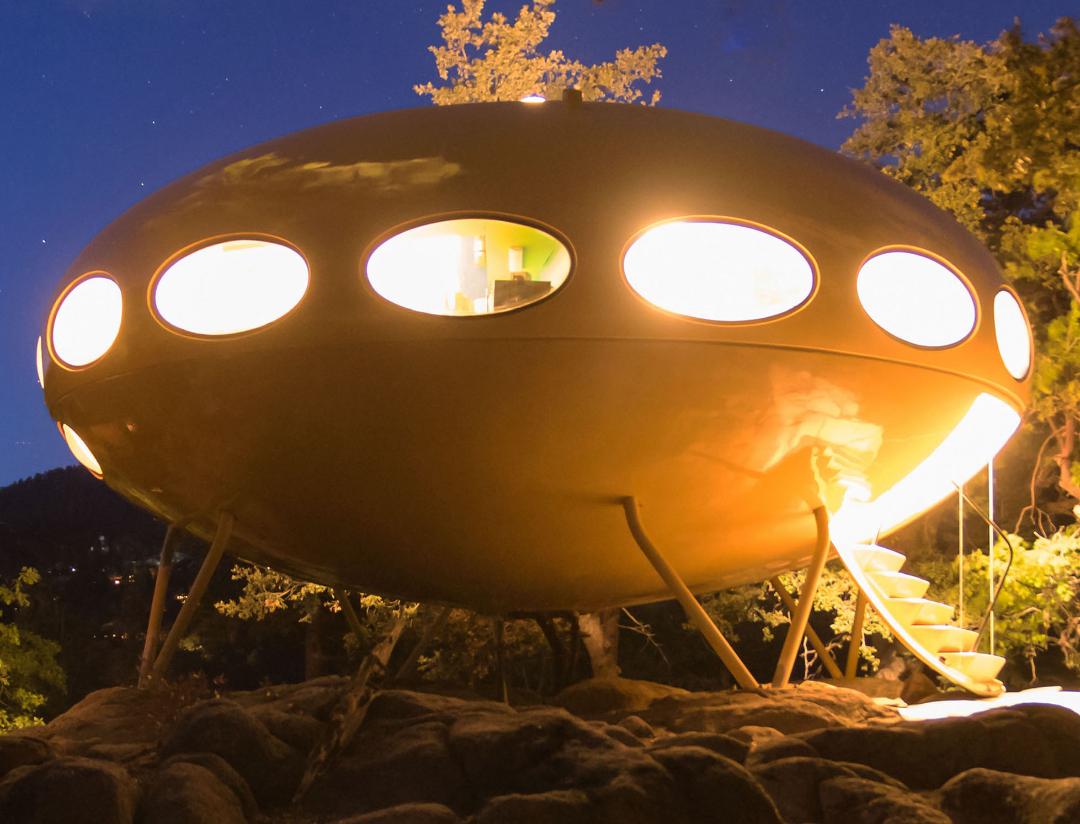 |
Eichler homes are beautiful for sure – but aren’t they a bit square? How about a modern dwelling with curves? Houses with circular plans have long attracted dreamers and remain popular today, and one was recently named to the National Register, as you can read in ‘Winner’s Circle,’ in the new, spring ‘22 issue of CA-Modern magazine.
Homes with circular plans are among the oldest dwellings in the world, going back to Celtic roundhouses from the Iron Age, Mongolian yurts, and igloos.
And in more recent times, long before Frank Lloyd Wright developed his concept of ‘organic architecture,’ designers focused on natural forms as inspiration for manmade structures.
“Nature’s forms are mostly spherical,” home designer Orson Squire Fowler wrote in 1848. “She makes ten thousand curvilineal to one square figure. Then why not apply her forms to houses?”
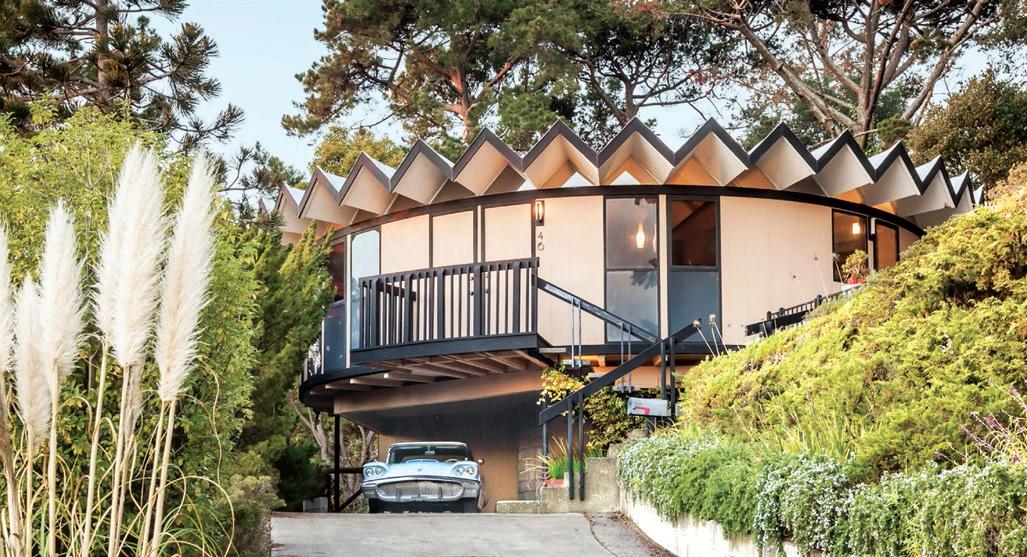 |
During the mid 20th century, modern architects too took to circular forms. One of the more recognizable houses of the period is the 'Chemosphere,' a saucer-like shape on a pod installed in the Hollywood Hills, a creation of architect John Lautner.
Few of the mid-century modern architects who created homes of a circular plan stuck to it as a major part of their production.
One who did, however, was Leon C. Meyer (1924-2003), who probably designed more houses in the round than any other California architect. Meyer played up not the fantasy of the form, but focused on structural strength and efficiency when promoting his homes.
“You can put more area in a round house than in a similarly sized box of a house,” he told designer Jonathan Taylor in an interview two decades ago. And Meyer proclaimed that round houses are “one of the most sound structures on Earth.”
More than utility, though, curves convey emotion, as they do in arabesques, in the ancient spirals and weaves of Celtic designs, in sinuous Rococo and Art Nouveau designs.
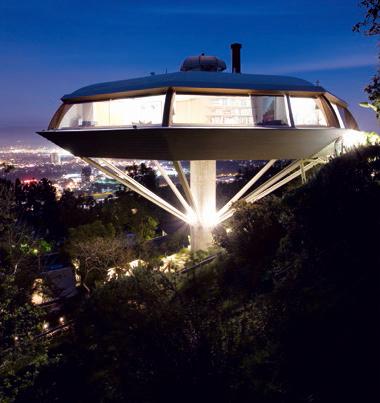 |
In modern houses in the round we find a sense of joy, whimsy, an openness to the out of doors, a revolt against the machined aesthetic of mainstream modernism, a striving for a better life brought on by homes that are more like living beings than dead boxes.
It is worth noting, though, that many houses that claim to be in the round are not truly circular. They are, instead, polygonal, with flat walls meeting to form a shape that seems circular. The walls themselves are not curved. Standard lumber, plywood, and sheetrock are not curved, you might note.
But the homes designed by Meyer were truly circular; he employed plastic, not glass, to create curved windows.
Dozens of Meyer’s homes were erected in California, and even in Hawaii. Over the years, some people have referred to them as ‘kit houses,’ but Meyer objected to that term. “True, the pieces were prefabricated off site,” Taylor has written, “but each house was custom, and created to suit the site.”
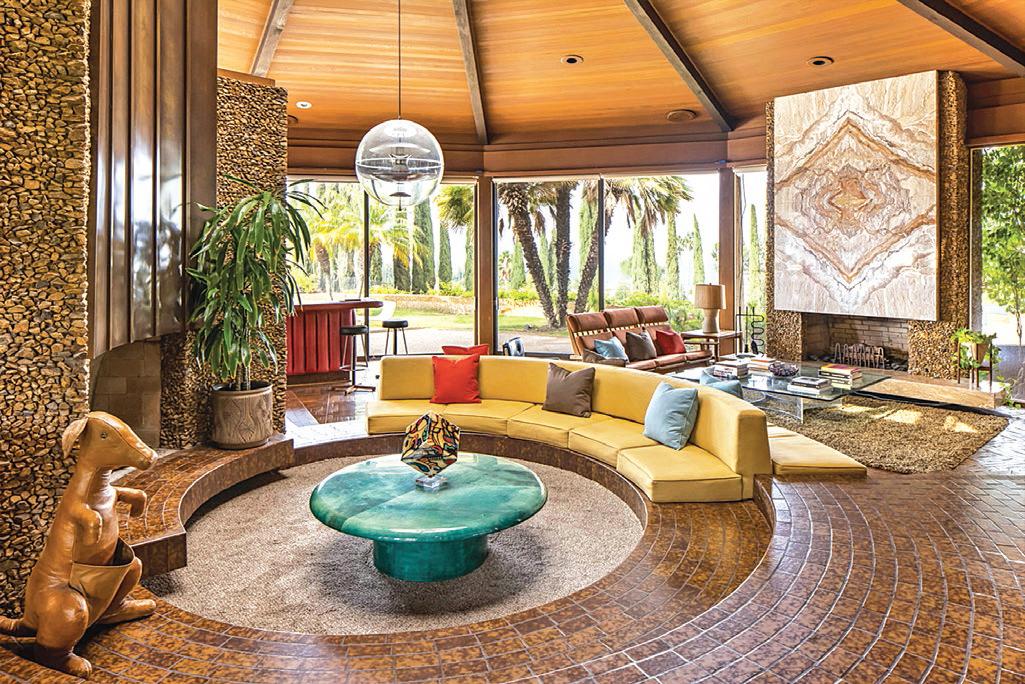 |
Another remarkable designer of homes in the round was Matti Suuronen, the Finnish architect behind the elliptically shaped Futuro, which he put into production in 1968 as a movable vacation home.
“It’s a flying saucer-shaped hideaway designed for whirlybird delivery and instant livability in any climate,” Playboy magazine reported in 1970.
Wayne Donaldson, California’s former chief architectural preservation official, owns California’s first (and, by far, best) example of a Futuro, which Wayne and his wife Laurie Donaldson have spent years meticulously restoring, after moving it to a rural suite in the San Jacinto Mountains.
He says the Futuro – one of about 61 remaining in the world – is an example of “space-age style” and representative of its period, when men were first venturing into space. He recently shephered its placement onto both the National Register of Historic Places and the state historic registry.
The Futuro is not the Donaldson’s only home. They also live in a Streng Brothers mid-century modern in the Sacramento area. However, they love spending time in the Futuro.
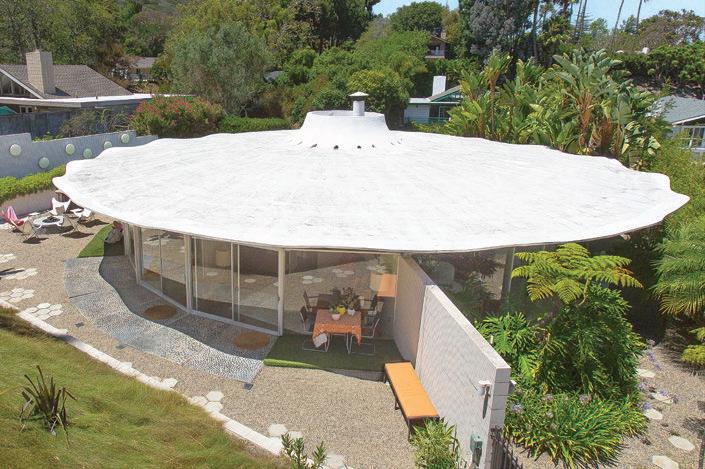 |
“When it's windy, the house sometimes oscillates,” he writes in a booklet published about the home’s restoration and history, “although that can be kind of nice, and rocks you to sleep.”
The booklet was prepared for the home’s dedication as California Registered Historical Landmark No. 1062, which was celebrated on April 16, 2022.
“In America, this portable Futuro was the first serially produced plastic house,” Donaldson writes. Wayne and Laurie are proud to put their names on it.
“In recognition of owner Milford Wayne and Laurie Donaldson’s restoration effort and resulting preservation of this fragile resource, essential to saving the building and raising the profile of the entire family of similar buildings," the booklet states, "the property is identified as the Donaldson Futuro by the National Park Service and the State of California.”
For more on California's fascinating crop of circular homes, enjoy ‘Winner’s Circle’ in the new, spring ‘22 issue of CA-Modern magazine.
- ‹ previous
- 495 of 677
- next ›



